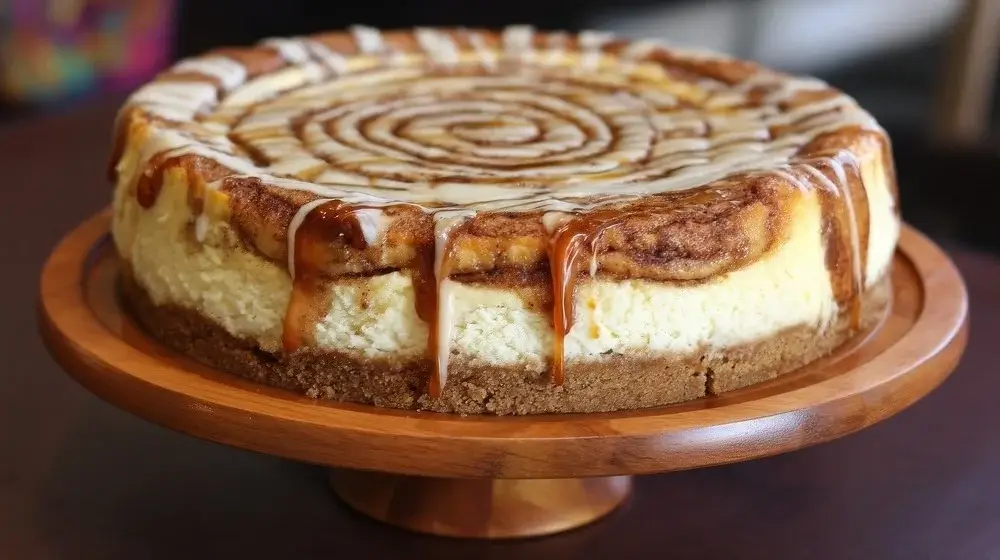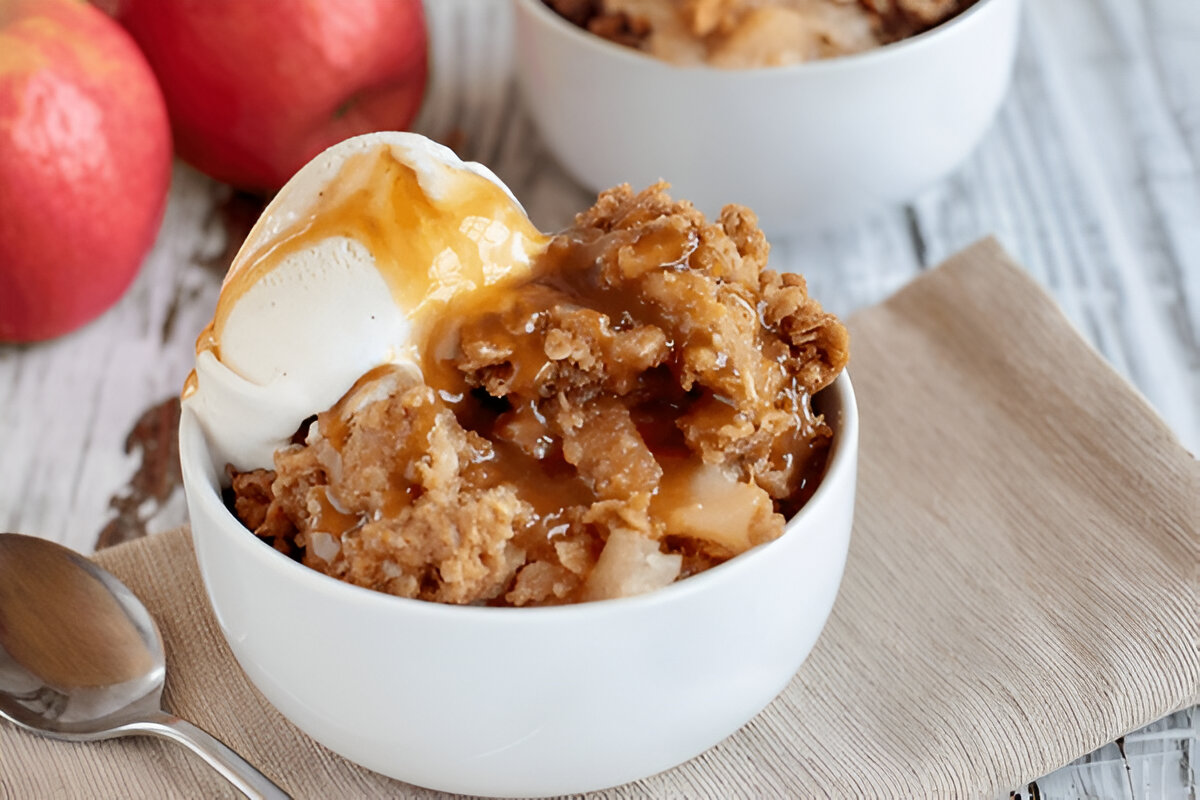Ever taken a bite of something and instantly imagined a quiet street in Zurich, the morning sun just peeking through, and that cozy little bakery scent wrapping around you like a hug? That’s what a Gipfeli does. It’s not just breakfast — it’s a vibe. A flaky, golden, just-right kind of vibe.
If you’ve only ever had a croissant, get ready — because this isn’t that. And if you’re here looking for the perfect Swiss Gipfeli recipe, or wondering if there’s a secret code behind its chewy layers and buttery flake, you’re in good hands. Let’s dig in.
What Is a Gipfeli?
Alright — let’s not assume. A Gipfeli is Switzerland’s proud answer to the French croissant. They might look like twins at a glance, but they sure don’t taste like them. Think of it like this:
- Croissants are fancy, flaky, buttery drama queens
- Gipfeli are a little humbler, a bit chewier, not as rich, and surprisingly satisfying in a low-key way
The word Gipfeli comes from “Gipfel”, which in Swiss German means peak or summit, a cute nod to its crescent shape. Some even say it symbolizes the Swiss Alps in pastry form. That’s pretty poetic for breakfast.
Gipfeli Recipe
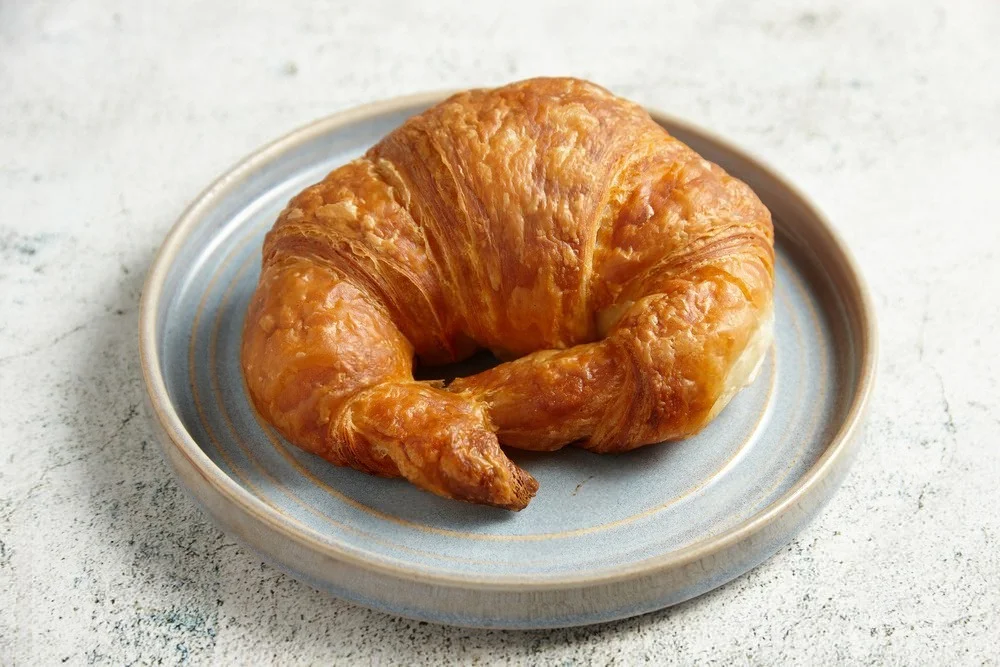
Ingredients
Dough
- 3 ¾ cups all-purpose flour
- 1 tablespoon sugar
- 2 teaspoons salt
- 1 packet instant dry yeast
- 1 ¼ cups cold milk
- 2 tablespoons unsalted butter (softened)
- ¾ cup cold unsalted butter (for folding into dough — lamination)
Optional: For the egg wash
- 1 egg yolk
- 1 tablespoon milk
Instructions
First stop: mix the base dough.
- Toss together your flour, sugar, salt, and yeast in a large bowl.
- Slowly add in the cold milk and softened butter. Mix until it forms a sticky dough. Knead it for about 8-10 mins till smooth and elastic.
- Then cover and let it rest in the fridge for about an hour. This chills the gluten and makes rolling way easier later.
Now for the butter block.
- Take your cold butter and place it between two sheets of parchment. Flatten it out into a thin square — around 7 inches or so. Keep it cold.
Time to laminate.
- Roll your dough out into a big rectangle, plop the butter square in the center, fold the dough over it like a letter. That’s your first turn.
- Chill. Then do two more folds, chilling between each one. This makes those gorgeous flaky layers — not as dramatic as a croissant, but still worth the effort.
Shape them.
- Roll out the final dough and cut it into long triangles. Roll them up from the wide side toward the point to get that classic crescent look.
Final proof.
- Let your shaped Gipfelis sit at room temp for about 45-60 mins, till slightly puffy.
Brush and bake.
- Brush them with your egg wash and slide them into a 375°F oven for about 18-22 minutes. You want golden tops and crisp edges.
- Let them cool just a little before eating — but only if you’ve got the willpower.
What Is the Difference Between a Croissant and a Gipfeli?
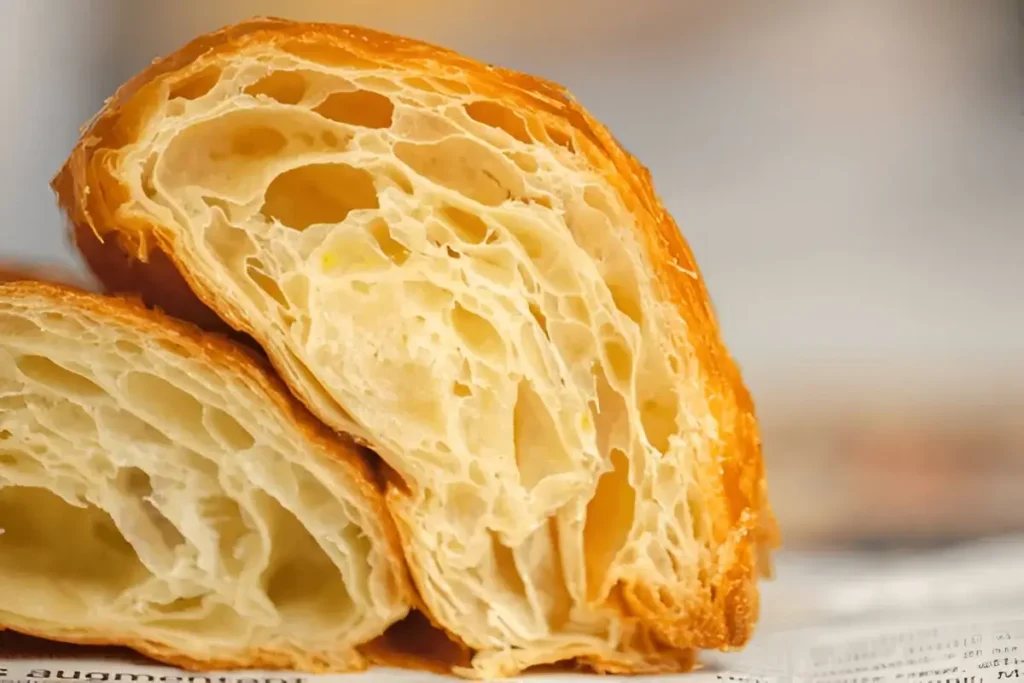
This question comes up a lot — and it makes sense. They share the same crescent DNA, but once you bite in, it’s a whole different story.
Here’s the breakdown:
Croissant:
- High butter content
- Multiple, crisp flaky layers
- Slightly sweet
- Melts in your mouth
- Rich and decadent
Gipfeli:
- Lower in butter
- Dough is denser and chewier
- Slightly saltier, more neutral
- Not as layered or flakey
- Often eaten with cheese or ham
And here’s something else — Buttergipfeli, or “buttery Gipfeli”, exist too. They’re somewhere between a croissant and a classic Gipfeli. Not quite as rich as their French cousins, but a little more indulgent than the regular Swiss kind. It’s like the middle child that figured life out.
What Is the Secret to a Good Croissant (and a Great Gipfeli)?
Now this one’s fun — because it’s kinda the same for both pastries… but also not.
To get that perfect Gipfeli texture, you’re aiming for:
- Cold, rested dough
- Strong gluten development (but not overworked)
- A gentle rise
- Proper lamination
- Slightly longer baking time at the right heat
Unlike croissants, where butter is the diva, Gipfeli dough needs balance — not too much fat, but just enough to stay tender and golden. The trick is in the rest periods and how you fold your dough. It’s not rocket science, but it does require some patience.
What Are the Ingredients in Nussgipfel?
The Nussgipfel — the sweet Swiss cousin to the classic savory Gipfeli. It’s filled with a nutty center that’s warm, cozy, and way too easy to love.
Here’s what usually goes into that nutty magic filling:
- Ground hazelnuts or walnuts (depends on the region — or your mood)
- Sugar
- A dash of milk or cream
- Egg white to bind it
- Sometimes a bit of cinnamon or vanilla
- Maybe a touch of rum if you’re feeling bold
The filling gets rolled up in the same style dough, then baked until golden and just a little crackly on the edges. It’s like a nutty cloud wrapped in pastry. Pure comfort.
What Is the Swiss Version of a Croissant?
If you’re still wondering what the Swiss version of a croissant officially is — well, it’s the Gipfeli, plain and simple.
But here’s the twist:
In Switzerland, you’ll find multiple types:
- Gipfeli: The basic version, often served plain
- Buttergipfeli: A slightly richer dough, closer to the French croissant but still its own thing
- Nussgipfel: Sweet and nutty, sometimes topped with a sugary glaze
- Schinkengipfeli – Stuffed with ham. Sometimes cheese. Savory and snackable
- Vollkorn-Gipfeli: Made with whole wheat flour, for that wholesome earthy feel
The Swiss take their Gipfelis pretty seriously, and honestly, you should too. So if someone asks What is the Swiss version of a croissant just hand them a warm Buttergipfeli and watch their face light up.
Pro Tips for Shaping, Baking & Filling Gipfeli
| Tip | Why It Matters / What to Do |
| The Cold Is Your Friend | Keep everything chilled during laminating. Melted butter ruins the layers. |
| Use European Butter if You Can | Higher fat = richer flavor, cleaner folds, and better dough. |
| Don’t Rush the Dough | Let the yeast do its thing. Slow rise = better croissant and Gipfeli texture, and flavor. |
| Develop Strong Gluten | Proper gluten development gives your dough strength and elasticity, helping it hold layers and rise beautifully. Knead just enough to build structure but not so much that it becomes tough. |
| Use Steam in the Oven | Place a pan of water in the oven to create steam. This helps develop that beautiful glossy crust, leaving the outside golden while the inside stays light and airy. |
| Respect the Resting Time | Chill between folds. Don’t skip it—it’s key to those layers. |
| Don’t Overbake | Aim for golden, not burnt. Watch closely toward the end. |
| Use a Pastry Brush | Egg wash should go on smooth. Avoid thick globs. |
| Trim Those Edges Clean | Before you start cutting your triangles, clean up the dough edges with a sharp knife or pastry cutter. This makes for even baking and prettier pastries. |
| Pointy Tip = No Pop-Out | When you roll your triangles into that classic shape, tuck the tip underneath. This keeps them from unrolling during baking and helps that tight spiral stay intact. |
| Egg Wash at the Right Moment | Brush your egg wash just before baking, not before proofing. Doing it too early can seal the dough and slow its rise. |
| Add Fillings After Rolling | If you’re stuffing them, do it with care. Put your filling near the base of the triangle, roll gently, and seal the edges if it’s something runny like jam or Nutella. |
| Try Different Fillings | Jam, cheese, chocolate—customize as you like. Have fun with it. |
| Use Parchment Paper, Always | It helps the bottom crisp up evenly and keeps butter from burning onto the tray. No one wants soggy-bottomed gipfelis. And it’s easy cleanup too. |
| Preheat Fully. Like Seriously. | Oven must be hot before dough goes in. No shortcutStart with a fully heated oven. Don’t throw your hard-earned dough into a lukewarm box. You’ll ruin the puff and lose the rise. |
| Check the Bottom | Bottom should be golden and feel crisp when tapped—don’t just trust the top. |
| Cool on a Rack | Avoid soggy bottoms. Let them rest on a wire rack. It lets air flow underneath while cooling, stops steam from softening your crust and keeps the base crisp. |
| Reheat the Right Way | Next day? Pop them in the oven for a few minutes at a low temp. Don’t microwave—unless you like soggy pastry sadness. |
| Make a Simple Glaze (Optional) | For a sweet twist, whisk powdered sugar with a splash of milk or lemon juice. Drizzle it over cooled pastries. Especially nice on Nussgipfel. |
| Give Them a Name Tag | If you’re making a variety — ham, cheese, jam, chocolate — use a toothpick label or a small corner cut on each type. No guessing later. |
| Practice Makes Layers | Your first batch might not be perfect. That’s fine. Every time you laminate and shape dough, you’re building muscle memory. You’ll get better with each bake. |
| Use a Kitchen Scale | Precision matters. Eyeballing leads to inconsistency. Weigh your ingredients for repeatable results and a consistent crumb. |
| Go Slow on Final Proof | Let your shaped Gipfeli rise at room temp until they jiggle slightly when nudged. Rushing leads to dense pastries. |
| Butter Leakage? You’re Not Alone | Some butter oozing during baking is normal. But too much means your dough wasn’t cold enough or your layers weren’t sealed right. Learn and adjust next time. |
| Freeze for Later | Shape, freeze unbaked. Then bake straight from frozen when needed. |
Gipfel Cookware — Is There Really Such a Thing?
Funny enough, when people search for Gipfel cookware, they’re not thinking about baking at all. There’s actually a kitchen brand named Gipfel, known more for pots, pans, and sleek stainless gear than pastries. Originating out of Germany, this cookware gets attention for being high-end, durable, and stylish — think minimalist vibes and heavy-duty function.
If you’ve got a Gipfel baking tray, you’re already halfway to success. Solid trays give even heat and help those buttery layers rise just right. But don’t worry if you’re using a basic baking sheet — your Swiss Gipfeli recipe will still come through just fine with parchment and patience.
What Is Gipfelkäse?
Gipfelkäse is one of those terms that catches folks off guard. It literally means mountain peak cheese in German — and it’s often used to describe aromatic, firm cheeses made in the Alpine region.
Think:
- Buttery texture
- Tangy, nutty notes
- Slight sharpness that melts beautifully
Some Swiss bakeries do make a version of cheese-filled Gipfeli using Gipfelkäse or other local cheeses. You might see them at train station cafés or farmer’s markets. The cheese melts into the dough and gives you a rich, oozy bite tucked inside those flaky folds.
If you’ve never tried a cheese-stuffed Gipfeli, now’s your moment.
You can even make a savory version at home. Just:
- Add a small strip of firm cheese (like Gruyère or Gipfelkäse if you can find it)
- Roll it up in the dough like usual
- Seal the edges to keep the cheese tucked in
- Bake as normal, and enjoy that molten surprise
Serving Suggestions – What Goes Best with a Fresh-Baked Gipfeli?
You made your dough, you baked your beauties, now what?
Here’s how to serve Gipfeli like a true Swiss local:
- Breakfast combo: Warm Gipfeli with a simple pat of butter and raspberry jam
- Savory snack: Pair it with slices of ham and cheese — eat it like a mini sandwich
- Coffee time: Espresso or a cappuccino is classic — you’ll see this all over Zurich cafés
- On the go: Wrap one up and toss it in your bag — Swiss people love grabbing one before catching the train
For the sweeter Nussgipfel, consider:
- Light powdered sugar dusting
- A side of Greek yogurt
- Or even a drizzle of light honey or chocolate
There’s no wrong answer. You just want to hit that contrast of buttery pastry with either salty or sweet notes.
Storage Tips — How to Keep Gipfeli from Going Sad Overnight
Here’s the thing — Gipfeli don’t last forever, and you probably already know that. But if you want to extend the joy:
To store:
- Wrap them in foil or parchment
- Keep in a breadbox or airtight container
- Room temp is fine for a day
To reheat:
- 5–8 minutes in a 300°F oven
- Skip the microwave unless you like chewy, soggy pastry (no judgment)
To freeze:
- Yes, you can freeze them
- Let them cool completely
- Wrap individually
- Defrost at room temp and then warm in the oven again to crisp back up
Troubleshooting — If Your Gipfeli Turn Out Weird…
Even the best bakers have off days. Here’s how to fix common slip-ups:
Gipfeli didn’t rise?
Your yeast may be tired, or the dough was too cold. Next time, let it rest longer before baking.
Too tough or dense?
Could be over-kneaded or under-proofed. This dough needs a gentle hand and plenty of chill time.
Butter leaked everywhere?
That’s usually from butter being too soft or your kitchen too warm while folding. Chill between each lamination step — no shortcuts here.
Flat shape?
Maybe your triangles weren’t rolled tight enough. Roll from the wide end gently, and let them proof long enough before baking.
Variations You’ll Want to Try
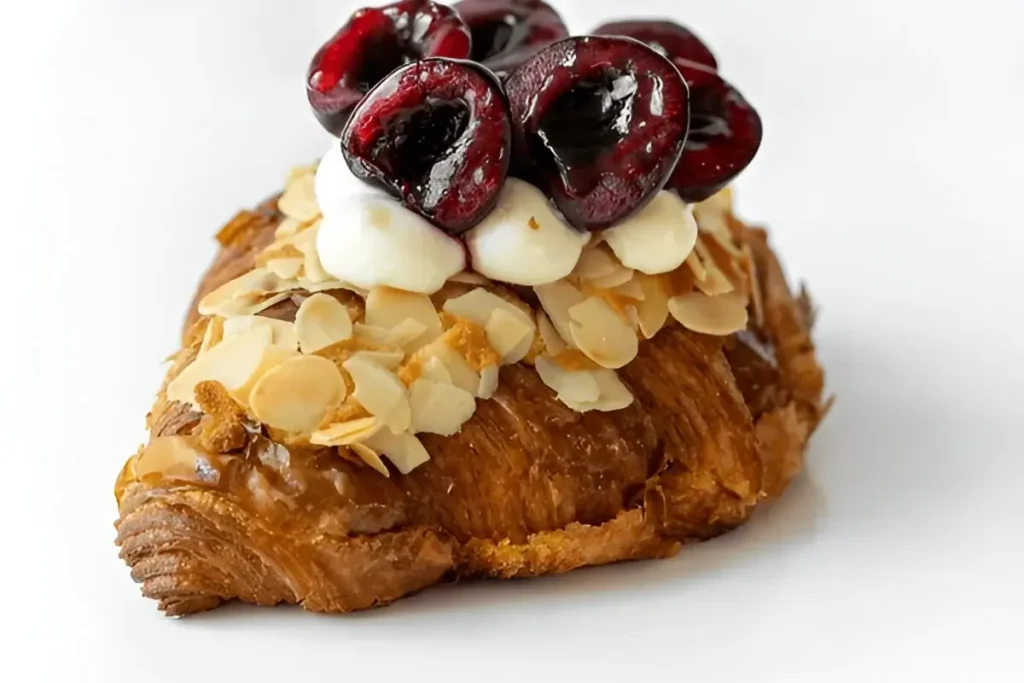
Once you’ve nailed the basic Gipfeli recipe, here are a few creative spins to play with:
Chocolate-filled
Pop a couple of dark chocolate sticks inside before rolling. Like pain au chocolat, but Swiss style.
Almond cream
Make a light frangipane and spread a thin layer inside the dough before shaping.
Whole grain
Swap in half whole wheat flour to make a Vollkorn-Gipfeli — hearty, nutty, great with jam.
Savory herb
Mix herbs like thyme or rosemary into the dough for a savory edge — great for charcuterie boards.
Regional Variations: Swiss vs. German vs. Austrian Gipfeli
Not all Gipfelis are created equal — and that’s the fun part.
- Swiss Gipfeli is a bit denser and less buttery than a French croissant
- It leans savory, often eaten plain or with just a bit of butter
- You’ll see Nussgipfel (nut-filled), Schinkengipfeli (ham-filled), and even sweet options in bakeries across Zürich and Basel
- Germany’s version leans more like the traditional croissant
- Austria’s Kipferl is seen as the granddaddy of all these — simpler, crescent-shaped, and dating back centuries
Mentioning these variations builds authority and helps catch users who search for “Swiss version of a croissant.”
Nutritional Info & Healthy Substitutes
While not exactly “health food,” you can still tweak your gipfeli recipe to match your goals.
Estimated Nutrition (1 plain Gipfeli)
- Calories: ~250
- Carbs: Medium-high
- Fat: Moderate from butter
- Protein: Small amount
Ingredient Swaps
- Vegan butter instead of dairy butter
- Oat milk or almond milk in place of regular
- Spelt or whole wheat flour for a nuttier, healthier base
- Skip the egg wash or use a plant-based version
Adding these makes your recipe more inclusive — gluten-free, dairy-free, or low-cal versions tend to earn traffic over time.
Where to Buy Gipfeli (or Ingredients) Online
If you’re not ready to roll out dough at home, here’s where you can get the next best thing.
Buy Pre-Made Gipfeli
- SwissBakery.com ships authentic pastries in North America
- Amazon sometimes carries frozen Gipfeli or Swiss-style croissants
- European grocery stores like Migros or Coop.ch (check if they ship)
Buy Authentic Ingredients
- Gipfelkäse: A Swiss alpine cheese perfect for filling
- European-style butter for richness
- Gipfel cookware (not just a name — high-end Swiss cookware brand that shares the name!)
Mentioning gipfel cookware helps build keyword diversity and relevance.
FAQs
What is the difference between a croissant and a gipfeli?
A croissant is flakier, buttery, and French in origin. A gipfeli is Swiss, denser, and often less sweet. It’s made for everyday breakfasts, not just special treats.
What is the secret to a good croissant?
Cold butter. Careful folding. And patience. Those layers take time, but they’re worth it.
What are the ingredients in Nussgipfel?
Nussgipfel are filled with a sweet hazelnut paste — usually made from ground nuts, sugar, milk, and sometimes breadcrumbs to bind it all together.
What is the Swiss version of a croissant?
That would be the Gipfeli — not as flaky, not as buttery, but beloved across Switzerland.
What does Gipfel mean?
In German, Gipfel means “summit” or “peak” — the shape and name both nod to the Alps.
A Final Word on Gipfels
Gipfeli may look like “just a pastry” to some, but they carry a quiet kind of nostalgia for Swiss mornings. There’s something grounding about baking one from scratch, about folding dough and waiting for it to rise — slow and steady. It’s a little act of care in a too-fast world.
Plus, now you can finally say you know:
- The difference between a croissant and a Gipfeli
- What makes a Swiss Gipfeli recipe stand out
- Why the Gipfel meaning goes beyond just the shape
- What’s in a Nussgipfel, and how to bake one
- How Gipfel cookware and Gipfelkäse sneak into the story
So go on. Make a batch. Brew some strong coffee. Tear one open and see the steam rise.
Because yeah — it’s just breakfast. But it’s also kind of everything.
Print
Gipfeli Recipe
Ingredients
Dough
- 3 ¾ cups all-purpose flour
- 1 tablespoon sugar
- 2 teaspoons salt
- 1 packet instant dry yeast
- 1 ¼ cups cold milk
- 2 tablespoons unsalted butter (softened)
- ¾ cup cold unsalted butter (for folding into dough — lamination)
Optional: For the egg wash
- 1 egg yolk
- 1 tablespoon milk
Instructions
First stop: mix the base dough.
- Toss together your flour, sugar, salt, and yeast in a large bowl.
- Slowly add in the cold milk and softened butter. Mix until it forms a sticky dough. Knead it for about 8-10 mins till smooth and elastic.
- Then cover and let it rest in the fridge for about an hour. This chills the gluten and makes rolling way easier later.
Now for the butter block.
- Take your cold butter and place it between two sheets of parchment. Flatten it out into a thin square — around 7 inches or so. Keep it cold.
Time to laminate.
- Roll your dough out into a big rectangle, plop the butter square in the center, fold the dough over it like a letter. That’s your first turn.
- Chill. Then do two more folds, chilling between each one. This makes those gorgeous flaky layers — not as dramatic as a croissant, but still worth the effort.
Shape them.
- Roll out the final dough and cut it into long triangles. Roll them up from the wide side toward the point to get that classic crescent look.
Final proof.
- Let your shaped Gipfelis sit at room temp for about 45-60 mins, till slightly puffy.
Brush and bake.
- Brush them with your egg wash and slide them into a 375°F oven for about 18-22 minutes. You want golden tops and crisp edges.
- Let them cool just a little before eating — but only if you’ve got the willpower.
